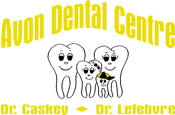| |

|
|

About Periodontal Disease
Periodontal is a broad term used to describe various diseases that affect the gums,
bone and surrounding structures of the teeth. The 2001 Guinness Book of
World
Record lists Periodontal Disease as the #1 disease affecting mankind. The most
common types of adult periodontal disease are gingivitis and periodontitis.
Gingivitis
causes bleeding and reddening of the gums. Periodontitis damages the bone
and
connective tissue that support the teeth.
Gingivitis is inflammation of the gum tissue. This happens when bacteria increases
in mass to form a paste-like substance called plaque. Accumulation of plaque and
tarter covering the teeth are the beginning stages of periodontal diseases. Tarter is
long standing plaque that has absorbed calcium on the tooth surface. Early detection
and your best defense.
Healthy Gums
A firm pink collar of gum over firm bone forms a healthy,
attractive and strong support for the teeth.
|
 |
Gingivitis
Accumulation of bacterial plaque along the gum line results in inflammation of the gums.
Red, puffy, bleeding gums indicate the presence of gingivitis.
|
 |
Early Periodontitis
Continued inflammation of the gums can result in the gums pulling away from the teeth,
allowing for formation of "pockets" filled with bacterial plaque, calculus (tartar), food debris
and pus. This painless infection now has resulted in damage to the bone (socket) supporting
the teeth.
|
 |
Moderate Periodontitis
Further spread of the gum infection results in further loss of bone support.
Lose, shifting teeth and more obvious recession of the gum can be seen.
|
 |
Advanced Periodontitis
Advanced gum disease is one of the leading causes of tooth loss in adults.
Painful gum abscesses can occur as the deeper infection gets trapped under the gum,
resulting in a buildup of painful pressure. |
 |
Risk Factors for Periodontal Disease
-
Poor dental hygiene
-
Poorly contoured fillings or crowns
-
Poor nutrition
-
Smoking
-
Chewing tobacco
-
High levels of stress
-
Diabetes
-
Down's Syndrome
-
AIDS
-
Taking certain medications: steroids, oral contraceptives
and blood pressure medications
-
Genetics: children of parents with periodontitis are 12 times more likely
to have the bacteria that can lead to periodontal disease
Warning Signs and Symptoms of Periodontal Disease
The existence of bone destruction under the gums cannot be
visually detected.
This makes it especially important to visit your dentist regularly.
-
Bleeding gums
-
Red, tender, puffy or swollen gums
-
Pain or tenderness in the gums
-
Itchy sensation
-
Teeth that are loose or shifting
-
Tooth sensitivity
-
Constant bad breath or taste
-
Changes in your bite
-
Changes in the fit of your oral appliance
(i.e. partial denture)
-
Gums that are pulling away from the teeth (i.e. recession)
If left untreated, periodontal disease can lead to tooth loss. Research indicates that
periodontal diseases may contribute to diabetes, respiratory diseases, heart attack,
stroke, or be associated with premature childbirth.
Prevention of Periodontal Disease
-
Good oral hygiene and visiting your dentist regularly can stop the diseases
progression
-
Eating a balanced diet to supply nutrients for good health
-
Proper use of a toothbrush, toothpaste, dental floss and mouthwash
-
Drinking at least seven glasses of water per day to increase saliva in the mouth
Treatments
An evaluation is done during a periodontal probe to measure the depth of the space
between the teeth and gums and x-rays are taken to see whether the bone is damaged.
Depending on the disease progression, the following treatments are used:
-
More frequent cleaning interval
-
Sealing is done to scrape off tarter and plaque from the tooth's crowns and
roots
-
Root planning is done to smooth rough surfaces of the root and allow the
gums to heal
-
Surgery may be needed in certain cases to properly treat the disease
Early detection is important in the treatment of periodontal disease. In addition, you keep
dental costs down by preventing further destruction. If you have any questions on
periodontal disease, its progression and treatment, ask your dental care provider.
Return to Top

Avon Dental Centre © All Rights Reserved 2003 Web Design By SBL Prod.
|










